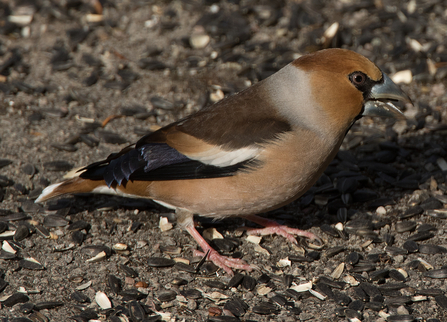Finches largely spend the summer catching insects and their larvae to feed themselves and their chicks. Insects are a lot harder to come by in the winter but finches are adaptable with their diet and can utilise their large beaks to feed on seeds over the winter. This means they are able to survive our winters, particularly if we give them a helping hand by feeding them in the garden.
There are a considerable number of finch species that have been recorded in the UK but a good number of these have never occurred in Gwent as they are just rare migrants or vagrants. In this blog we will concentrate on the species you have a good chance of seeing here in Gwent.
There are a total of 13 finch species that have been recorded within the county. Nine of these regularly breed here, one is a regular winter visitor, and one an occasional visitor. Two have only been recorded once – the Common Rosefinch and Common Redpoll.
The nine breeding finch species are: Chaffinch, Bullfinch, Greenfinch, Goldfinch, Siskin, Lesser Redpoll, Linnet, Crossbill and Hawfinch. Bramblings are regular winter visitors and Twite are seen occasionally.


